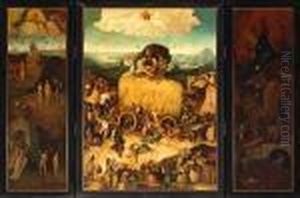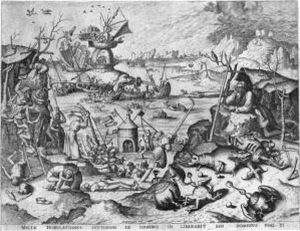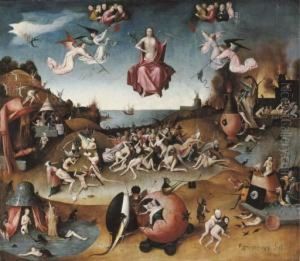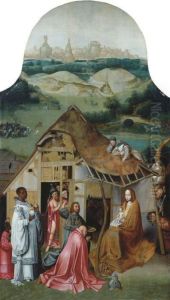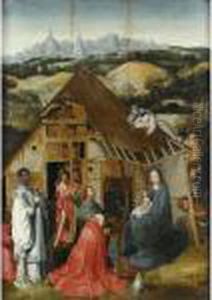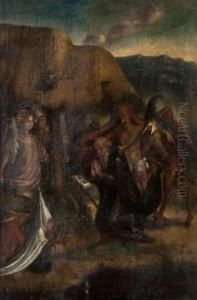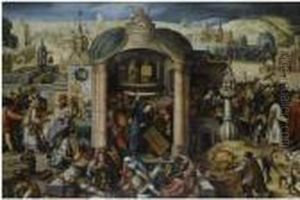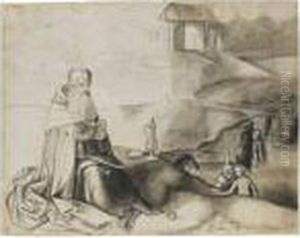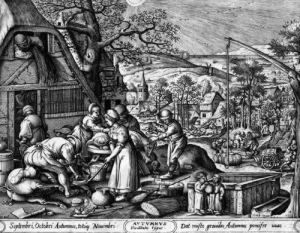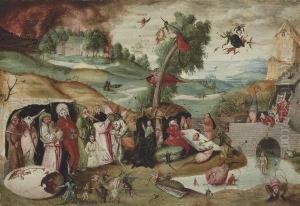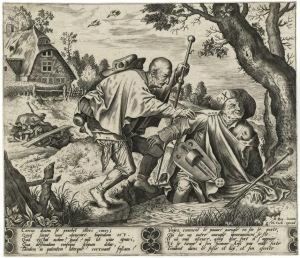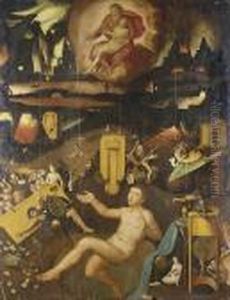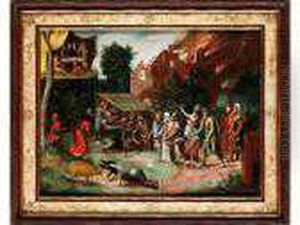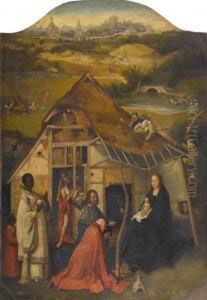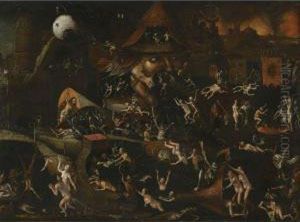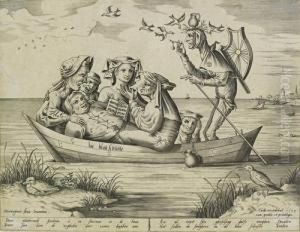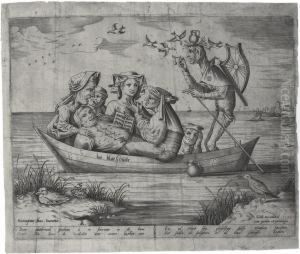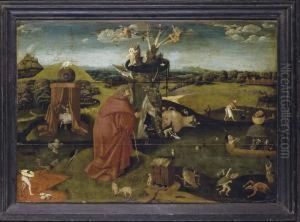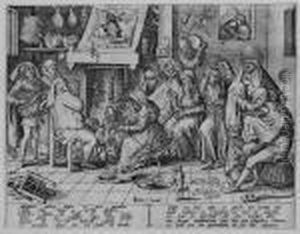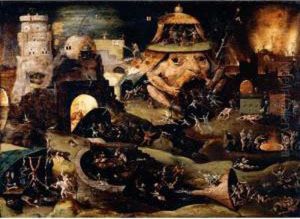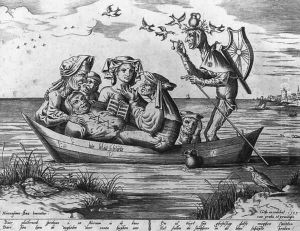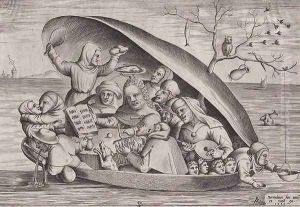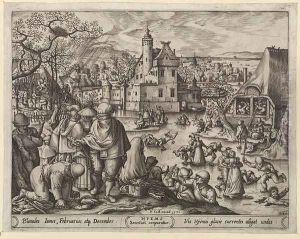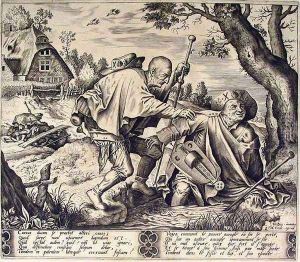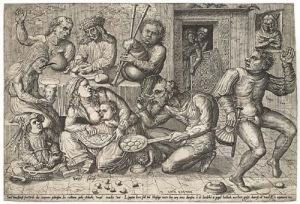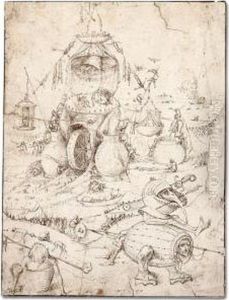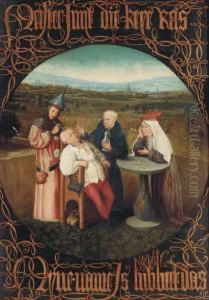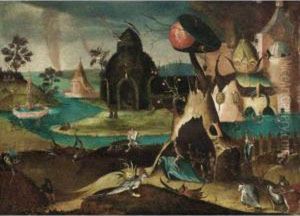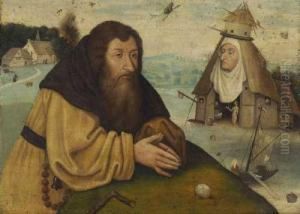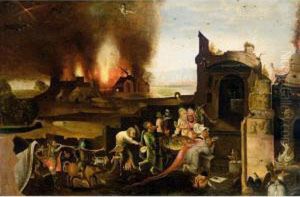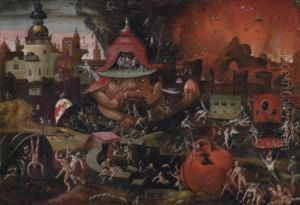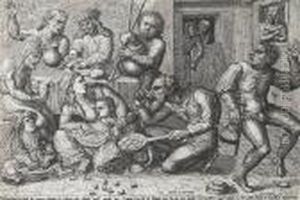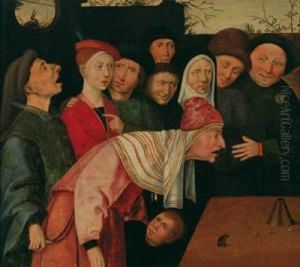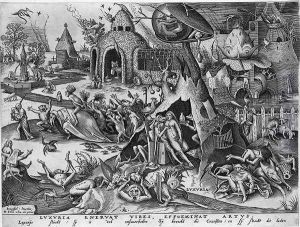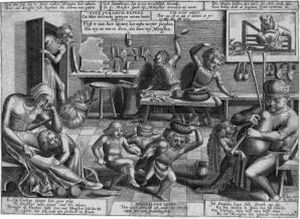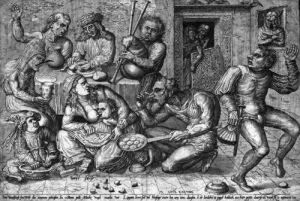Pieter van der Heyden Paintings
Pieter van der Heyden was a Flemish engraver and printmaker who was active during the 16th century. Born around 1530, likely in Antwerp, he became known for his skilled engravings that often depicted scenes from popular stories, allegories, and proverbs, as well as landscapes and genre scenes. His works were characterized by their intricate details and imaginative compositions.
Van der Heyden's career is closely associated with the prominent publisher and printmaker Hieronymus Cock, with whom he worked extensively. Cock's publishing house, Aux Quatre Vents, was a well-known center for printmaking in Antwerp and played a significant role in disseminating the works of Northern Renaissance artists. Van der Heyden produced many prints after designs by Pieter Bruegel the Elder, one of the most significant artists of the time. His interpretation of Bruegel's designs helped to popularize Bruegel's works throughout Europe.
One of van der Heyden's most famous prints is 'The Temptation of St. Anthony,' which he executed after a design by Bruegel. This print demonstrates his ability to translate the complexity and detail of Bruegel's compositions into the medium of engraving. Van der Heyden's works often reflected the social, political, and religious themes of his time, and they were widely circulated, influencing other artists and the visual culture of the era.
Despite his prolific career as an engraver, little is known about van der Heyden's life. The exact details of his death are not clear, but it is generally believed that he died sometime after 1572. Due to the lack of records, much of van der Heyden's life and personality remain enigmatic, and his work stands as the primary testament to his artistic legacy.
